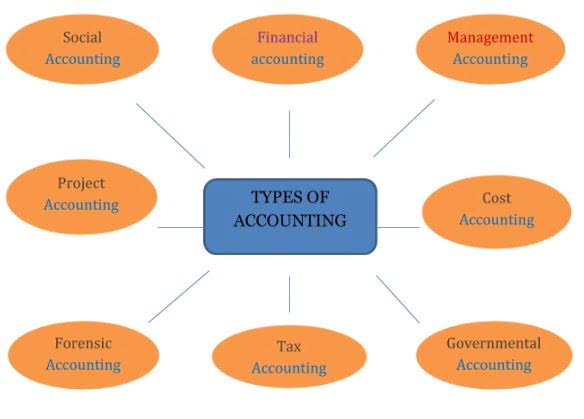This process of going private is often accomplished through treasury stock purchases because corporate funds are used instead of the personal resources of the surviving stockholders. First, the amount of treasury stock is generally limited by state law to the balance of retained earnings. A corporation’s board of directors may decide to acquire treasury shares for various reasons. One reason for this action is to obtain shares for re-issuance when all authorized shares are issued and outstanding. There are two dilutive instruments where the treasury method can be used to calculate the net dilution. Second, the TSM is a straightforward and easy-to-use method that requires minimal inputs and calculations.
This method is important because it helps investors and analysts better understand the potential impact of these securities on the company’s financial performance. Each company is required to make use of the treasury stock method in calculating EPS to ensure compliance with generally accepted accounting principles (GAAP). The treasury stock method assumes that companies exercise warrants and options at the start of a reporting window and buy shares at the present market cost. The treasury stock method should be used in the diluted EPS calculation to determine the dilutive effect of stock options. The treasury stock method assumes that the proceeds from the exercise of in-the-money options are used to repurchase common shares at the average market price.
The Financial Modeling Certification
In this section, we will delve into how the Treasury Stock Method works, exploring its intricacies and shedding light on its significance in financial reporting. The treasury stock method is the most commonly used method for calculating diluted EPS because it is simple and accurate. It takes into account the potential dilution of earnings per share from the exercise of options and warrants and assumes that the proceeds from the exercise are used to repurchase common shares.
- Engaging in a treasury stock purchase agreement is a tactical decision companies often make to maintain their fiscal health or achieve specific goals.
- One of the main limitations is that it assumes that all proceeds from the exercise of stock options or warrants are used to repurchase shares of the company’s stock.
- Assume the total sum of ABC Company’s equity accounts including common stock, APIC, and retained earnings was $500,000 before the share buyback.
- Using the treasury stock method, there is no effect on net income, as all proceeds from the repurchase are assumed to be depleted in repurchasing treasury stock off the market.
- One of the primary advantages of using the Treasury Stock Method is its ability to provide a more accurate calculation of diluted EPS.
- If the EPS value is not calculated accurately, investors may misunderstand the company’s financial performance, leading to wrong investment decisions.
What Are Retired Shares?
However, the case could be made that to be more conservative in the diluted share count calculation, the number of outstanding options should be used despite not treasury stock method all being exercisable on the date of the valuation. This is done to reflect the reality that the majority of unvested options have a high probability of vesting someday, which is a practice that investors and firms have increasingly adopted in recent years. Hence, the fully diluted shares outstanding count is a relatively more accurate representation of the actual equity ownership and equity value per share of a company. In effect, the TSM estimates the hypothetical impact of the exercising of in-the-money securities to measure their collective effect on the fully diluted shares outstanding. The number of new shares created as a result of exercising the instruments must be added to the shares outstanding when calculating the diluted number of shares outstanding.
The treasury stock method takes into account potentially dilutive securities that could impact EPS if they were exercised or converted into common shares. This method assumes that any proceeds from the exercise or conversion of these securities would be used to repurchase common shares at the average market price during the period. Suppose a company has 100,000 outstanding shares of common stock and 10,000 stock options outstanding with an exercise price of $50 per share. If all of the options are exercised, the company would receive $500,000 ($50 per share x 10,000 shares).
Would you prefer to work with a financial professional remotely or in-person?
The treasury method is therefore used to calculate the diluted number of shares and hence, the equity value or diluted earnings per share (EPS). One of the key assumptions of TSM is that all proceeds from the exercise of options are used to buy back shares at the current market price. However, this assumption may not hold true in reality, as companies may use the proceeds for other purposes such as investments, debt repayment, etc. Once treasury stock is calculated, it’s listed as a contra-equity account in the shareholders’ equity section of the balance sheet. It represents shares that the company has issued but are no longer outstanding because they have been repurchased.
- The TSM is a way of accounting for the dilutive effects of stock options, warrants, and convertible securities.
- While the TSM is a widely used method for calculating diluted EPS, it is not the only option available to companies.
- This method assumes that the proceeds from options and warrants can be used to repurchase its shares at the average market price.
- The Treasury Stock Method is an essential tool for calculating EPS and provides a more accurate measure of the impact of dilutive securities on EPS.
- In addition, the company has 10,000 options with a strike price (X) of $2 and the current market price (CMP) of $2.5.
Want To Learn More About Finance?
Treasury Stock is credited for the total cost of the shares sold, and the account Additional Paid-in Capital from the Sale of Treasury Stock Above Cost is credited for the difference. Treasury stock is the corporation’s own capital stock, either common or preferred, that has been issued and subsequently reacquired by the firm, but not canceled. A treasury paid-in capital account is also either debited or credited depending on whether the stock was resold at a loss or a gain.
For instance, let’s consider Company XYZ, which has 100,000 outstanding shares and grants 10,000 stock options with an exercise price of $50 each. Under the Treasury Stock Method, we assume that all 10,000 options are exercised at $50 each, generating $500,000 ($50 x 10,000) in proceeds. With this amount, Company XYZ can repurchase 8,333 shares ($500,000 / $60), reducing the number of outstanding shares to 91,667 (100, ,333). Diluted EPS Calculation is important because it provides a more accurate measure of a company’s earnings per share.
Understanding the Treasury Stock Method (TSM)
This calculation holds significance as it provides insights into future equity structure and company valuation, which can influence investment decisions. Finally, the TSM provides a conservative estimate of the diluted EPS, which is an advantage for investors. The method assumes that the securities will be exercised at the current market price, which may be higher than the exercise price. Using the TSM provides investors with a conservative estimate of the company’s earnings potential, which can help them make better-informed decisions. The Treasury Stock Method Formula might appear complex, but it serves as an essential tool for assessing the potential impact of stock options and convertible securities on a company’s financials. By understanding this formula, investors, analysts, and financial professionals can make more informed decisions and gain a deeper insight into a company’s earnings potential and valuation.
Convertibles – One-Step vs. Two-Step
It’s a powerful technique that empowers us to navigate the intricate landscape of finance with precision and confidence. The Treasury Stock Method Formula plays a vital role in understanding the potential impact of stock options and convertible securities on a company’s financials. By factoring in the dilution effect of these instruments, investors and analysts can gain a more accurate understanding of a company’s EPS and its potential effects on shareholder value.




